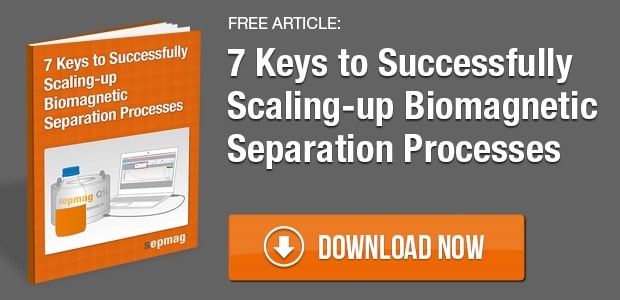Nucleic acid detection is crucial in the clinical practice since it can be used to rapidly identify pathogenic organisms. Rapid detection with highly sensitive methods is essential for diagnosis and choosing treatment courses. This is a complex task since samples need to be enriched with the nucleotide targets and at the same time needs to eliminate nucleases, PCR inhibitors and host material. This means that to detect and identify genetic material from a pathogen, in the form of 18S and 28S rRNA, in an efficient and reliable way, the protocol needs to eliminate eukaryotic rRNA from the sample to avoid competition for the substrates during the cDNA synthesis, since it decreases the detection sensitivity.
The isolation of nucleic acids using magnetic beads is widely applied in the biotechnological field for a wide array of technical purposes. Focusing on the issue of diagnosis by detection of rRNA, Marie J. Archer and colleagues have developed a a single-step subtraction method for eukaryotic 18S and 28S ribonucleic acids. Contrary to the traditional chloroform extration methods, which involve labourious steps and manipulation of toxic reagents, this new method allows the selective separation RNA targets while ensuring the integrity of the templates. This is important to obtain meaningful results since traditional extraction has the risk of loss of template. In order to do this, the human RNA is captured with capture probes attached covalently to magnetic beads. The covalent binding is done using a dendrimer linker. The method was also validated using rat thymus RNA samples mixed with E. coli RNA, which demonstrated that, by using random capture probes coupled with magnetic beads, the protocol is more efficient than when specific probes are used. This is explained by the increase in possible binding sites and the use of tetrame-thylammonium-chloride buffer. By subtracting the eukaryotic RNA from the sample, it was purified to the same extent has what is seen with commercial purification kits.
This innovation in technique will allow cheaper and faster isolation of rRNA which will save precious time and allow a more feasible results when preforming diagnosis in a clinical setting.
Development of a single-step subtraction method for eukaryotic 18S and 28S ribonucleic acids. Archer, M. J. & Lin, B. J. Biomed. Biotechnol. 2011, 910369 (2011).
Related news:
- Detection of uranium ions in the environment with a magnetic beads-based approach
- Clinical validation of Raman scattering with magnetic beads in the diagnosis of rheumatoid arthritis
- The use of magnetic beads in an integrated microfluidics system for virus detection





